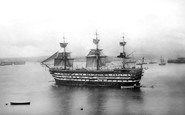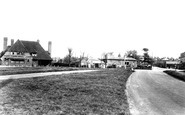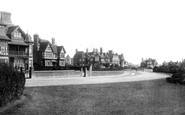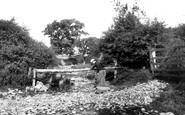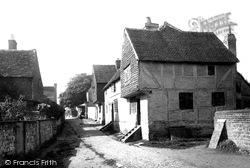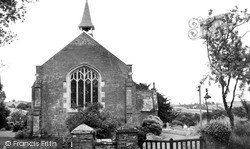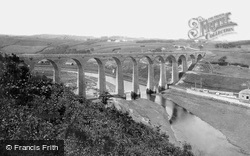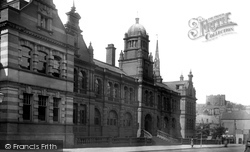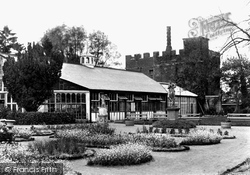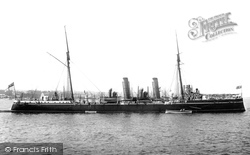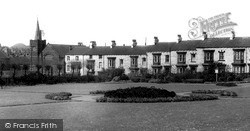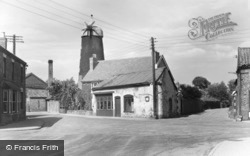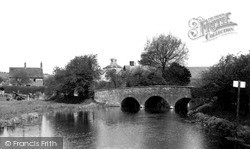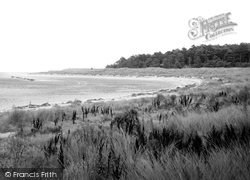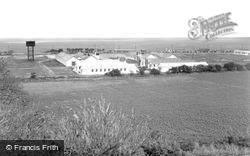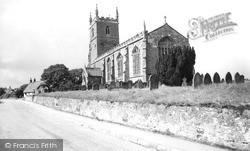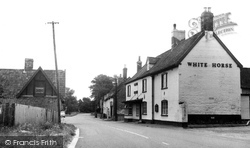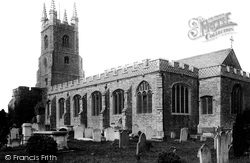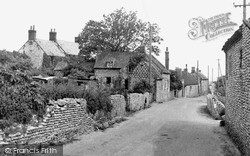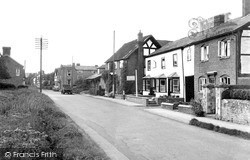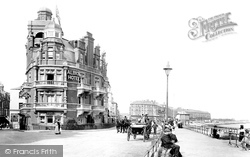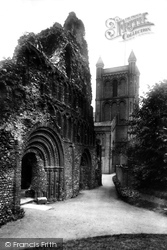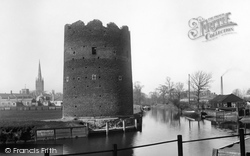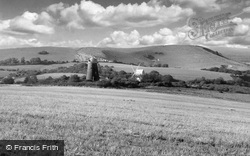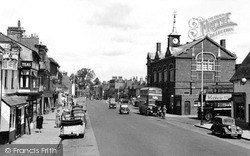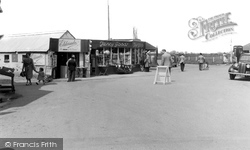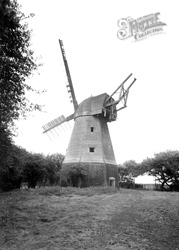Places
Sorry, no places were found that related to your search.
Photos
Sorry, no photos were found that related to your search.
Maps
Sorry, no maps were found that related to your search.
Books
Sorry, no books were found that related to your search.
Memories
741 memories found. Showing results 121 to 130.
Training To Be A Bricklayer
During my chidhood I was to perform lots of different tasks that would make life for my mother a little easier. I did not know it at the time but she was actually training me for my working life. Not ...Read more
A memory of Intake in 1951 by
Service On Hms Impregnable 1877 1879
My grandfather, Uriah Hazlehurst, served on this ship from 2nd April 1877 until 2nd March 1879 with a short break between 6th to 19th August 1878 when he was with 'R. Adelaide'. He went on to serve in the RN until 4th October 1895 when he was discharged to Plymouth Hospital.
A memory of Devonport
Greyhound, Fox & Central Garage
This photo has the 3 places that were a big part of my early working life. I worked in the garage from 63 through 69, the owner was Charles Holland who lived next door, we used the fox pub most evenings & weekends ...Read more
A memory of Keston in 1963 by
Wartime Evacuee 1939 1940
In August 1939 I was evacuated frm Salford to Caton. I had my gas mask, a small parcel of food and a label on my clothing. We arrived at the then beautiful station, adorned with flowers. Then we walked to the Village ...Read more
A memory of Caton in 1930 by
East Kent Coastal Holidays In The 1950s/60s
As a child the East Kent coast was a regular destination for our 2 week family summer holiday. We usually stayed in Westgate. In the late 1950s the excitement started with the journey from ...Read more
A memory of Westgate on Sea by
Happy Days
This photo shows what was known as the black shed just above the first bridge on the river Gele, to the left of the photo was the school field at the bottom of Berth Glyd where I was born. If you go up Gypsy Lane you will come to an ...Read more
A memory of Abergele in 1950 by
Evacuated To Great West Farm
My mother Eileen and her brother Ian Carter were evacuated to Great West Farm, Quethiock in 1940. Here are her memories of that time:- On June 16th 1940 we were evacuated from Marvels Lane School, Grove Park, London ...Read more
A memory of Quethiock by
Dunstaffnage War Years
Like your other contributors I also spent my very early years in Dunstaffnage. Dad had spent the early part of the war from day one as a young Engineer Officer on North Atlantic convoys in the Merchant Navy. When you were lucky to ...Read more
A memory of Oban by
Growing Up In Buckhurst Hill 60's 70's
I used to live in The Meadway, and went to St Johns infants School-a few memories of playing on 'the boxes' at play/lunchtime. These were actually old beer crates, and long before health and safety spoiled ...Read more
A memory of Buckhurst Hill by
My Memories Of Melworking At Leybourne Grange Hospital
Hi yes I remember my time at the hospital well,I worked in the play therapy from 1971 to 1976. I loved working at the hospital and have many happy memories. I worked as a night nurse for two ...Read more
A memory of West Malling by
Captions
493 captions found. Showing results 289 to 312.
Cobbles, brick, timber and tile - an enchanting corner of Bletchingley over one hundred years ago.
The church, up a lane on the north side of the village, is a haven from the busy A38 which passes through between Saltash and Liskeard.
The viaduct was originally erected for the Scarborough and Whitby Railway. The first brick was laid in 1882 and the first locomotive crossed the thirteen-arched viaduct in 1884.
Built of red brick, the Shire Hall was designed by local architects H Barnes and F E Coates, and was completed in 1898.
Rye House 1904 The front aspect of the mid-15th-century red brick gatehouse of Rye House, the scene of the ill-fated 1683 Whig conspiracy to ambush Charles II as he returned to London from Newmarket
Laid down at Sheerness in 1895, engined by Clydebank, and completed in 1897, 'Pelorus' was the lead ship for a class on the Cape Station before transferring to the East Indies.
This handsome terrace of Victorian houses, built in distinctive white 'Pease' brick overlook the Coronation Park.
The mill was a Lincolnshire-style brick tower with an onion-shaped cap. It had five patent shuttered sails, as is indicated by the five-way cross on the front of the windshaft, and a fantail.
Sitting in the delightful Kennet valley a couple of miles east of Marlborough is Mildenhall - known locally as 'Minal'.
The beach is an area of outstanding natural beauty, and the dunes form a National Nature Reserve.
The Stiffkey Anti-Aircraft training camp was erected as a satellite to the larger AA camp at Weybourne in the late 1930s.
The church of St Peter, in North Street, has a superb Norman doorway, possibly the best in the county (so the experts say), and the church has further Norman architecture inside.
The drainpipe (right) marks the division between the timber-framed building of 1694 to the left and a Victorian brick extension nearer to us.
The Church of St Mary stands at the top of the hill above the old Cluniac Priory of Prittlewell.
This scene is characteristic of the North Norfolk coast: the walls and houses are built of whole flints found in the fields or on the nearby beach.
There are a number of lovely timber-framed buildings in this village, and many more that were once of timber, until a brick façade was added at a later date.
This imposing brick gateway, surmounted by a clock tower, was built 1860-62.
Past the Georgian remains of Sea Houses, at the junction of Royal Parade with Seaside, is the flamboyant Albion Hotel, now renamed the Carlton Hotel, its red brick all colour- washed.
Like St John's Abbey, St Botolph's Priory lay outside the town walls. It was founded before 1100, but never grew very large.
This massive medieval structure, formed of flint and ruddy Dutch bricks, squats close by the river, near Bishop Bridge.
The Clayton Windmills were built in the 19th century. Jack, on the left, is a large brick-built tower mill which was worked until the early part of this century.
A No 82 bus stands outside the Victorian red brick Town Hall. Thame became a market town during the 13th century, and its importance as a commercial centre is still evident today.
Again we see the village centre, with another of the special seaside shops that sold everything needed for a seaside holiday.
It was dismantled in 1959 and the parts were taken to County Oak, near Gatwick Airport, but have not been reassembled.
Places (0)
Photos (0)
Memories (741)
Books (0)
Maps (0)

